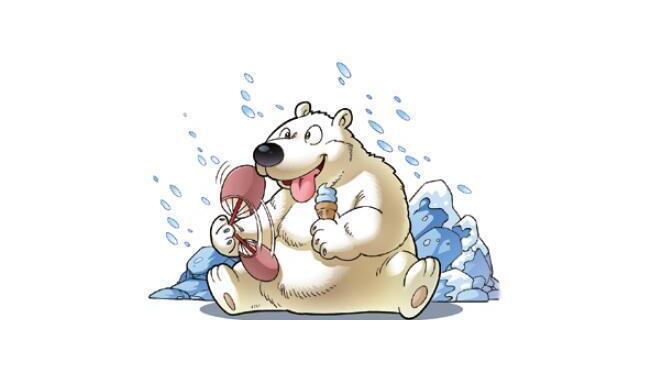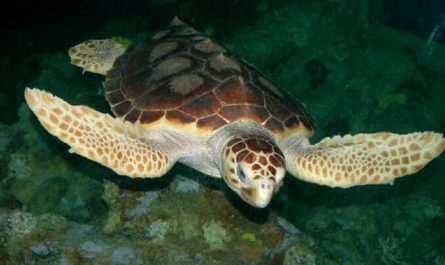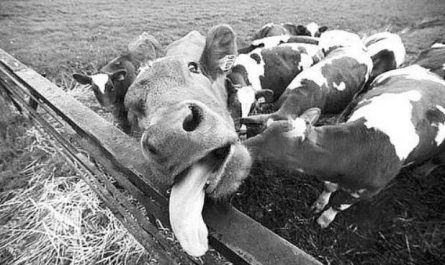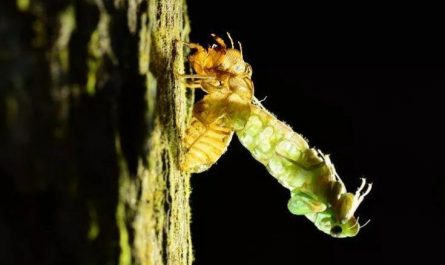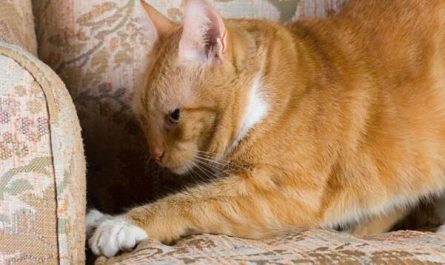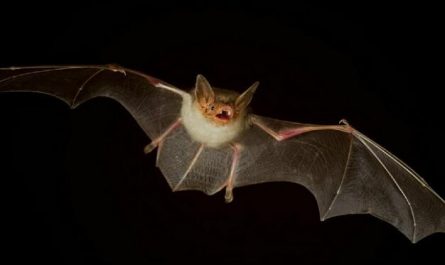The reason why polar bears are not afraid of cold
Male polar bears are about 240-260 cm in length and generally weigh 400-750 kg. Female polar bears are about half smaller than males. By the time of winter sleep, their weight can reach 1,000 kg due to the accumulation of fat. Polar bears have an extremely sensitive sense of smell, 7 times that of dogs.
White bears living in the North Pole are also called polar bears. Polar bears are never afraid of severe cold. Even if the temperature drops to minus 80°C, they still live.
Scientists studied the dense fur of polar bears and found that the fur of polar bears is not white, but colorless and transparent. This kind of hair is like a quartz fiber, in fact a hollow tube, each hair can scatter the incoming sunlight, making the hair appear white and become an excellent protective color for polar bears. At the same time, this hair can also transfer the scattered radiation to the surface of the skin, where it is absorbed and converted into heat energy, so that the heat lost in the metabolism of the polar bear can be supplemented. In addition, the polar bear, a natural solar collector, can convert more than 95% of solar radiation energy into heat! Inspired by the fur of polar bears, scientists filled flat-panel solar collectors with hair-like fibers, resulting in the efficiency of converting solar energy into heat. Increased by 50%.
The appearance characteristics of polar bears
The polar bear is the largest land carnivore today. An adult polar bear stands up to 2.8 meters tall and 1.6 meters tall at the shoulder. Male polar bears weigh 300-800 kg, and females 150-400 kg; fat will accumulate in large amounts before winter, and their weight can reach more than 800 kg. Bear paws can be up to 25 cm wide and bear claws can exceed 10 cm. Polar bears can run at a speed of 40 kilometers per hour and can swim 97 kilometers in the sea at a speed of 10 kilometers per hour.
Compared with brown bears, polar bears have longer heads and smaller faces, small and round ears, slender necks, wide feet, hairy limbs, and black skin, which can be seen from the polar bear’s nose, paw pads, lips and the dark skin around the eyes The original appearance of the skin, black skin helps to absorb heat, which is another good way to keep warm. The fur of the polar bear is a colorless and transparent hollow tube, which is usually white in appearance, but it may become pale yellow, brown or gray due to oxidation in summer.
The large sole of the polar bear allows it to use the forefoot as a “paddle” to swim in the water, while the wide backfoot is used for walking on ice and snow; it has an extremely sensitive sense of smell and can capture a radius of 1 km or under ice and snow. The smell of 1 meter; because of eating a lot of fish, polar bears digest a large amount of vitamin A and store it in its liver, so eating the liver of polar bears can cause poisoning.
The image of polar bears will appear in countless cartoons. They are docile, honest, cute, and loyal. They are good partners of mankind. They sleep on the glacier as cute as a three-year-old child sleeping with a rag doll. But they sometimes slap their heads to express fear.
The polar bear is the largest carnivore in North America, weighing 1,800 pounds and can stand up to 10 feet. Every year, 20 to 90 people are attacked by polar bears. They have no natural enemies, but they can tear a 12-inch-thick airtight can with a 4-inch hole, just like peeling a banana.
Life habits of polar bears
activity
Polar bears are such excellent swimmers that they were once considered marine animals. Polar bears spend most of their lives (about 66.6%) in a “static” state, such as sleeping, lying down, or waiting for prey. The remaining 29.1% of their time is walking or swimming on land or ice , 1.2% of the time is attacking prey, and the rest of the time is basically enjoying delicious food.
Sometimes the prey caught by polar bears will attract the same kind of prying eyes. Generally speaking, if you are unfortunate enough to face those big guys, smaller polar bears will be more inclined to slip away. However, a mother who is feeding her young is to protect her young. , Or defending a family’s hard-won rations, and sometimes fighting against the offending male bear. At the same time, polar bears are the only bears that actively attack humans, and most attacks occur at night. [1]
feeding habits
Polar bears are genuine carnivores in the bear family, and 98.5% of their food is meat. They mainly prey on seals, especially ringed seals, as well as bearded seals, saddle seals, and crested seals. In addition, they also catch walruses, beluga whales, seabirds, fish, small mammals, and sometimes clean carrion. In summer they will occasionally eat some berries or plant roots. At the end of spring and summer, they will go to the beach to fetch the seaweed that rushes up to supplement the minerals and vitamins needed by the body.
Unlike other bears, they don’t hide unfinished food and wait for it to eat later, even after eating the fat, they will grow up. You must know that for them, high-calorie fat is more than meat. Is important because they not only need to maintain the fat layer for warmth, but also need to store energy when food is scarce.
Hunting
Polar bears generally have two hunting modes, the most commonly used is the “waiting for the rabbit” method. They will find the seal’s breathing hole on the ice in advance, and then wait a few hours beside them with great endurance. When the seals show their heads, they will launch a sudden attack and use sharp claws to drag the seals up from the breathing holes. If the seals are on the shore, they will also hide out of the seal’s sight, and then creep over to attack. Another mode is to dive directly under the ice surface and not attack until the seals close to the shore. This has the advantage of directly blocking the seal’s retreat. After eating and drinking, the polar bear will carefully clean the hair and remove all the food residues and blood.
Flexible hands
There are rumors on the Internet that polar bears are all left-handed.
In fact, scientists have spent a lot of time with polar bears and found that their forelimbs are very flexible (they use “hands” together). This rumor may come from people discovering that polar bears are very good at using their left hands, but ignoring that their right hands are also doing well.
Sleep habits
Generally speaking, polar bears are very active during the 3.5 months of each year, tossing around the ice floes for food, living an amphibious life. In the severe winter, polar bears have greatly reduced their outing activities and can almost stay without food for a long time. At this time, they look for shelter from the wind and sleep on the ground. The respiratory rate decreases and enters local hibernation.
The so-called partial hibernation, on the one hand, means that they are not the hibernation of animals such as snakes, but that they can wake up immediately in case of emergency and cope with changes. In addition, polar bears do not eat or drink for a long period of time, rather than the entire winter.
Scientists have also suggested that polar bears may also have partial summer dormancy, that is, in the period when the summer ice floes are the least, polar bears may find it difficult to find food and may also be in partial summer dormancy. One basis is that Canadian polar bear experts caught several polar bears with fur on their paws in Hudson Bay in the autumn. Experts speculate that they have almost no foraging activities in summer otherwise the bear’s paws will not be covered with long hairs.
